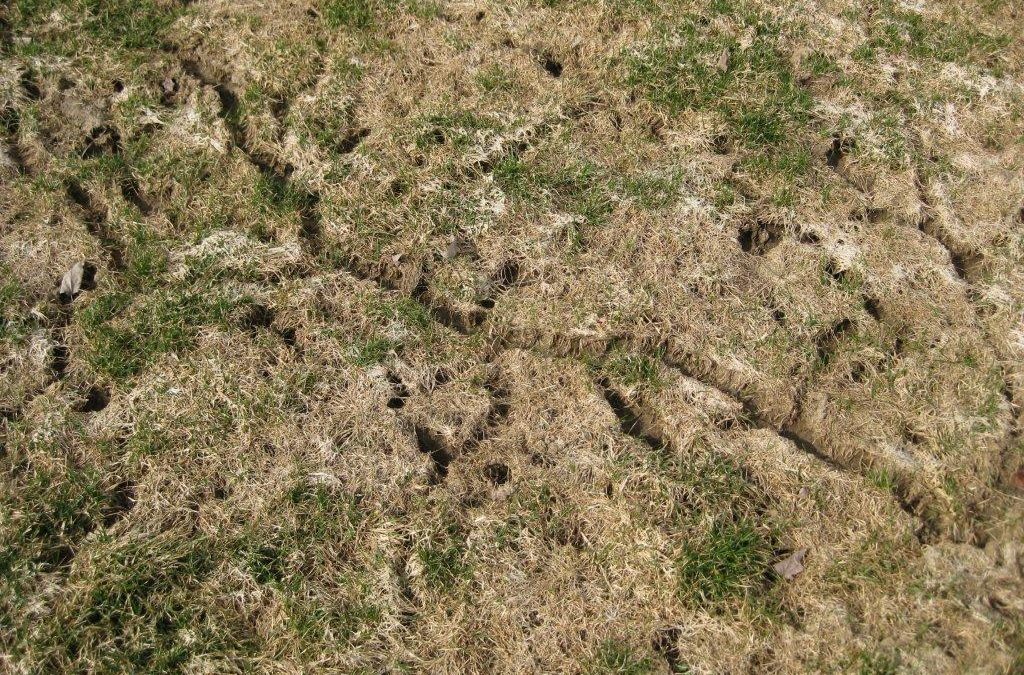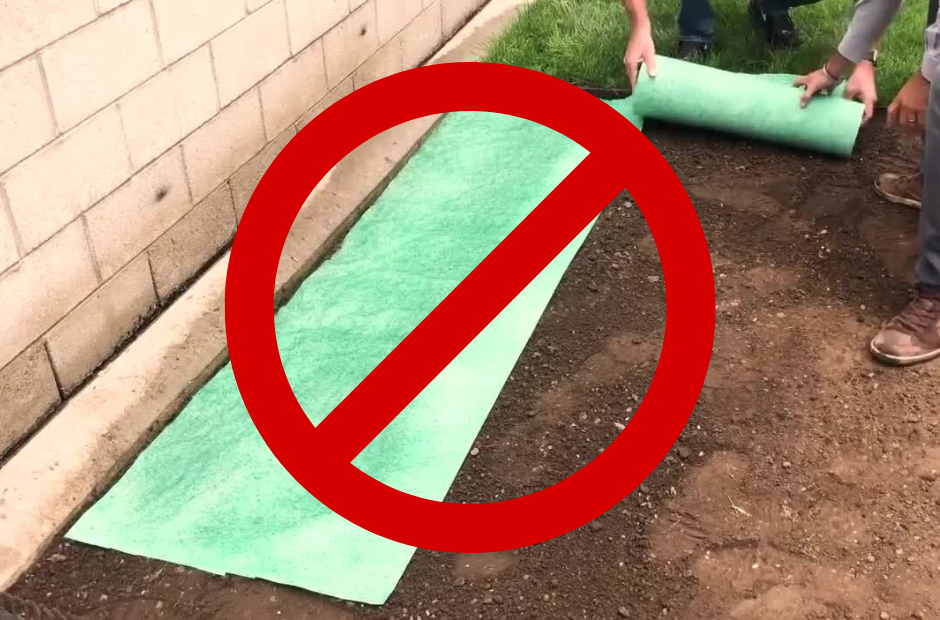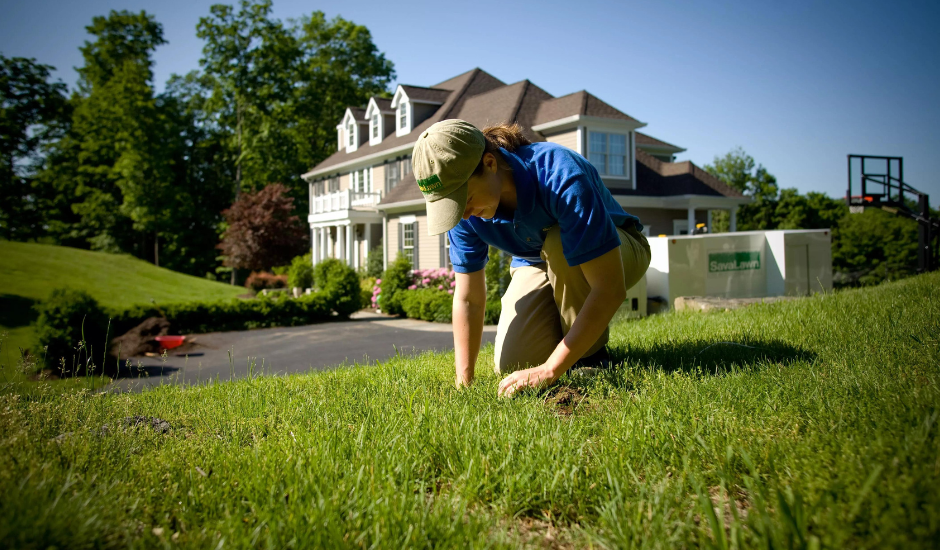Your lawn is about ready to come out of hibernation. The steps you take this Spring, will have a great impact on how the rest of the seasons shapes up.
Believe it or not, Spring is just around the corner. As we start to experience warmer days and see the sun more, it gives us hope. Hope for outdoor activities, a new season of life, and a new season to accomplish some great things on your lawn. It’s time to get back out on the lawn and take some very important steps to make sure your lawn starts off the season on the right foot!
Step 1 – Evaluate 👀
The very first thing to do on the first nice day of Spring is take a walk around the lawn. It’s likely that snow has been sitting on your lawn for several months, and you haven’t been out there to be able to check on it. You might not think it, but there are many things that can hurt your lawn during the Winter season.
Dogs 🦮 – If you or your neighbors own a dog, it’s likely that they honed in on one specific area to do their duty all winter long. That area is likely saturated with urea and dog waste. Make sure you take the time to get that picked up and raked up. Your grass needs water and sunlight and some time to breathe after all those heavy hits last winter.
Traffic 👟 – If you have a mailman, children or pets around, they likely chose one path to travel on in your lawn to make things easy during the cold and snowy weather. This area is likely more compacted and brown than the rest of your lawn.

Snow Removal ❄️ – After each snow storm, the plows and snow blowers are out. This gives that equipment plenty of opportunity to tear up the lawn. Check for torn up pieces of turf along paved areas.
Moles 🐁 – During the winter months, the moles move closer to the surface and even make shallow tunnels under the snow, on top of your lawn. Check for active vole and mole tunnels and take appropriate action if it appears they are still being used.
Disease 🦠 – The long, cold winter can produce problems of its own for your lawn. Check for signs of mold and other winter diseases that could have harmed your lawn. We will expand more on this topic in our next blog.
Plan and Act! 🗓 ➡️ 🥾
Now that you have walked around and checked for problem areas and potential damage, it’s time to make a plan and take action!
If you have areas of the lawn that have experienced damage, it’s best to see if you can heal those areas first. Our cool season lawns are pretty hardy and can stand up to a lot of abuse. If you rake up the area of lawn that appears to be damaged and make sure it doesn’t receive more immediate damage, it is entirely possible that it can come out of it in due time.
If you discover that a certain part of the lawn is too far gone and is not going to survive, it’s time to consider patch seeding that area. Seeding a lawn with great success takes the appropriate steps. Make sure you wait until Spring weather has fully arrived and we are seeing daytime temperatures in the 60’s and 70’s to have the most success!
First, you want to prep the area, rake and rough up any dirt so that it is loose and free of other debris. Second, put down some good quality top soil from a local hardware or farm and home store for the new seed. This will give the seed something to grab onto. Third, purchase a high quality seed blend of Turf Type Tall Fescue and/or Kentucky Bluegrass. This part is very important. Don’t go cheap on grass seed. You will end up with seed that contains poor quality seed varieties and likely contains weed seeds. If you want a good quality sourced seed, find a local landscape supply store, they will have the better seed varieties than the big box stores. Once you have your seed, lightly spread it over the new soil and gently rake it in. Once about half of the seed is covered, apply a second light layer of seed.

Fourth, if you want to take your percentage of success higher, purchase a starter fertilizer. All fertilizers have 3 numbers on the front of them, you want the fertilizer that has the middle number higher, this will promote root growth. Most of the starter fertilizers you can find at the store, will say “starter fertilizer” on them. Fifth, cover the seed with some sort of straw or peat moss. This will hold in moisture and protect the seed. Sixth, make sure the seed stays damp. Water the seed for about 3-5 minutes morning and evening. You don’t need to drown the seed, but if the seed dries out, it will not germinate and grow.
The next important part of your lawn is to get a fertilization and weed control plan in place. Making sure you fight against the weeds and feed your lawn with the right food, makes all the difference in the world. This can be a daunting task, so to make things easy, give WarrenLawn a call, they have all the answers you need. 😉
These aren’t all the things you can do to help your lawn this Spring, but doing these will put you well on your way to having the lawn you want this season. It’s no different than taking your car into the shop to have a tune up, or taking your body into the doctor to have a physical and then implementing a workout and diet.
It’s time to get out there and evaluate your lawn and take action if you want to see results.
Always remember, you aren’t alone. If you have any hesitations or questions, Warren Lawn has the answers and assistance you need. Get in touch with us and we would be happy to provide with you with whatever assistance and answers you need, to find success in the lawn this year.



